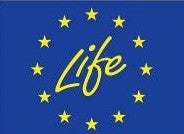Gorringe Bank to Receive EU Protection
Portugal proposes the inclusion of Gorringe Bank as a site within EU’s Natura 2000 network. This unique spot includes two seamounts, Gettysburg and Ormonde, located 160 nautical miles off the south western Portuguese coast. The seamounts extend from depths of 28 m and 33 m below sea level to more than 5,000 m and are … Read more

